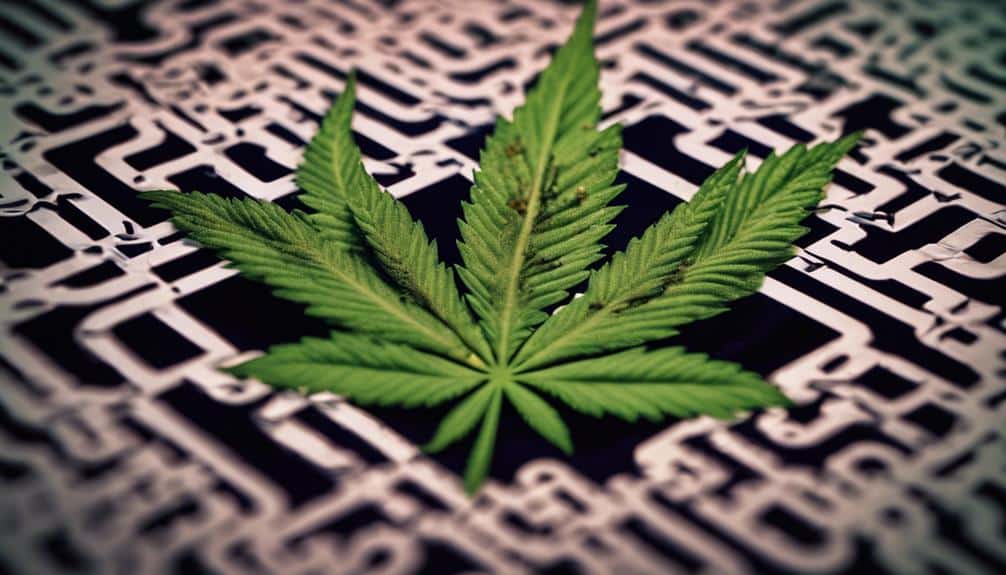Imagine walking through a field of green, where each leafy plant holds the potential to heal or harm.
Table of Contents
You’re standing at the crossroads of a heated debate over cannabis. Is it a medical miracle, offering relief to those with chronic pain and debilitating illnesses? Or is it a public health risk, with potential for abuse and long-term damage?
As you ponder these questions, you’ll find there isn’t a simple answer but rather a complex interplay of factors that we’ll delve into further.
The Historical Context of Cannabis

Cannabis’s history, steeped in cultural, medicinal, and recreational use, has profoundly influenced its reception and perception in contemporary society. It’s important to recognize that ancient uses of cannabis were prevalent in many societies; from the Chinese using it as an anesthetic in 2900 BC to the Egyptians employing it for inflammation and glaucoma. The plant’s versatile properties made it a widely accepted natural remedy.
However, the 20th century brought about a significant shift in perspective; thus began the Cannabis Prohibition era. Fueled by political and racial motivations along with fears over public health and lack of scientific understanding, lawmakers in the U.S., followed by others globally pushed for criminalizing cannabis. The 1937 Marijuana Tax Act in the United States essentially banned its use and sales. Meanwhile, propaganda campaigns painted cannabis as a dangerous drug further damaging its public image.
As you navigate this topic, it’s crucial to understand this historical context. The dichotomy between the ancient uses of cannabis and its prohibition is a key factor in the ongoing debate surrounding its role in society today. Understanding this helps foster an informed, balanced discussion on the subject.
Medical Benefits of Cannabis
Despite the tumultuous history and negative perceptions associated with cannabis, it’s important to note its significant medicinal benefits that have been recognized in modern science. With advances in cannabis pharmacology, researchers are discovering a wide variety of therapeutic applications that can benefit individuals and communities.
You might be surprised to learn that the human body is equipped with an endocannabinoid system, which cannabis interacts with to bring about its medicinal effects. This system plays a crucial role in regulating mood, sleep, appetite, and pain sensation. Cannabis, particularly its active compounds THC and CBD can effectively alleviate chronic pain, reduce inflammation and even mitigate the debilitating symptoms of multiple sclerosis and epilepsy.
As a caregiver or health professional, you’d appreciate the potential of cannabis in improving patient quality of life especially for those who haven’t found relief in conventional treatments. It’s also worth noting that cannabis has shown promise in managing mental health disorders like PTSD and anxiety.
However, it’s crucial that cannabis be responsibly administered and carefully dosed given its potential for misuse. As the medical community continues to explore this plant’s capabilities it’s hoped that its full therapeutic potential can be unlocked.
Potential Health Risks Associated

While acknowledging the medical benefits of cannabis, it’s imperative to also consider the potential health risks associated with its use. It’s important to understand the addiction concerns tied to this substance. Though not everyone who uses cannabis becomes addicted, it’s a real possibility especially when used frequently or in high doses.
Regular cannabis use can lead to Cannabis Use Disorder characterized by a strong desire to use the drug, unsuccessful attempts to quit and development of tolerance and withdrawal symptoms. This can significantly impact your life affecting relationships, work and overall health.
Another potential health risk lies in lung damage. Smoking cannabis regularly can lead to similar respiratory problems experienced by tobacco smokers such as chronic bronchitis and lung infections. Although it’s less common, cannabis smoke contains many of the same harmful substances as tobacco smoke which could potentially cause lung cancer.
Ultimately, in serving others it’s important to present a balanced view of cannabis use. While there are undeniable medical benefits you can’t ignore the potential health risks. Awareness and education are key in making informed decisions about cannabis use.
Societal Impact of Legalization
In exploring the societal impact of cannabis legalization it’s critical to examine both positive and negative repercussions on communities. You’ll find that debate often centers around economic implications and crime rates.
- Economic implications: Legalization can fuel economic growth through job creation and tax revenue. However, it’s important to consider potential costs such as public health expenditures and possible loss of workplace productivity due to increased usage.
- Crime rates: Some argue that legalization lowers crime rates by eliminating the black market for cannabis. Conversely others worry that increased availability could lead to a rise in drug-related offenses or other types of crime.
- Public health and safety: While not directly tied to economics or crime this is a crucial aspect of societal impact. Are emergency room visits going up due to cannabis-related incidents or is there a decrease in opioid overdoses due to patients switching to cannabis for pain relief?
As you delve into the complexities of cannabis legalization it’s essential to weigh these factors and their potential impact on your community. Your ultimate goal should always be serving the best interests of the individuals you represent.
Current Legislation and Policies

To fully grasp the cannabis debate, you need to understand current laws and policies that govern its use, sale, and production. It’s crucial to comprehend conflicts between state and federal laws as well as policy loopholes that appear as a result.
On the federal level, cannabis remains a Schedule I substance illegal for any use. This federal stance conflicts with numerous state laws that permit medical or recreational cannabis use. This incongruity creates a gray area leaving many users, providers, and even researchers in uncertainty.
Policy loopholes further complicate matters. For instance, the Rohrabacher-Farr amendment prevents the Justice Department from using federal funds to interfere with states implementing their own medical cannabis laws. Yet it doesn’t change the legality of cannabis. This among other policy contradictions can make navigating cannabis laws confusing and inconsistent.
Conclusion
In conclusion, you can’t ignore the fact that cannabis presents both potential health benefits and risks. Consider the case of a patient who finds relief from chronic pain due to medical cannabis yet a teenager whose mental health is impacted by casual use. It’s a delicate balance between public health and individual benefit. Current policies need to carefully weigh these aspects fostering an informed, responsible approach to cannabis use and legislation.
I would like to personally invite you to continue this conversation with us at Cannabis Docs of Delaware. We’re here to listen, share, and help you understand more about this complex issue. Whether you’re curious about potential benefits of medical cannabis have concerns about its risks or just want to learn more we’re here for you. So why not pay us a visit or give us a call? We’ll be more than happy to chat with you.

